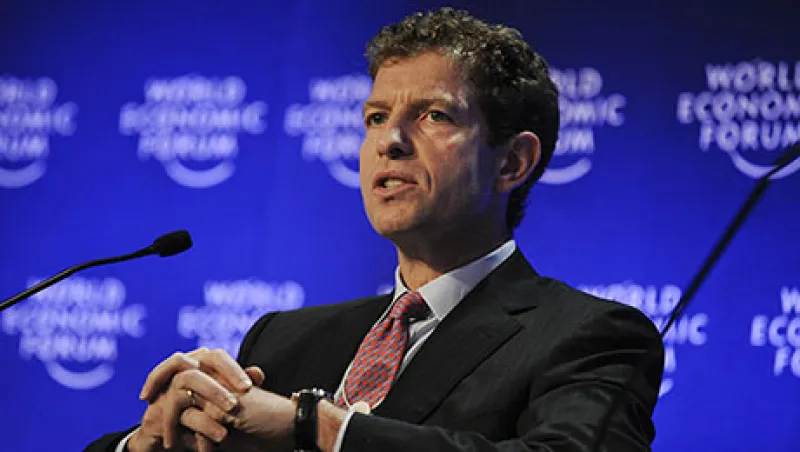Och-Ziff Capital Management Group CEO Dan Och is likely one of many people who are glad to see 2016 fade into the rearview mirror.
Hit by poor performance, redemptions, and the fourth-largest Foreign Corrupt Practices Act fine in history — $412 million — for deals concerning investments in Africa, Och-Ziff had one of its worst years since its 1994 inception. This year isn’t starting on a much better note: On Tuesday Och-Ziff, one of a handful of publicly traded alternative-investment firms, disclosed that assets had fallen by $3.6 billion in December, and overall assets had fallen from $45.5 billion at the start of 2016 to $35.5 billion today. The firm did not disclose how much of that $3.6 billion drop was in the form of redemptions, although its main fund gained 0.72 percent in December, suggesting the decline did not come from performance losses. Och-Ziff reported receiving $9 billion in redemptions for the first nine months of 2016. Meanwhile, a new report from a U.K. NGO is pushing for further investigation into some Africa-related investment companies with which Och-Ziff had dealings. An Och-Ziff spokesperson declined to comment.
One source of Och-Ziff’s problems: uninspiring performance in its flagship global multistrategy fund, the OZ Master Fund, which returned 3.82 percent in 2016. Whereas that result is not substantially worse than the average hedge fund’s performance last year — the HFRI Fund Weighted Composite index had returned 4.43 percent through the end of November — it is far lower than how the U.S. equity market performed, with the Standard & Poor’s 500 stock index having returned 11.96 in 2016. Och-Ziff is not alone in experiencing redemptions. Although the majority of investors do not expect equitylike returns from hedge funds, the sheer underperformance of hedge funds in aggregate, particularly during a bull market in equities, is causing some investors to experience buyer’s remorse.
Not all of Och-Ziff’s hedge funds underperformed. Its main credit fund, the $1.7 billion OZ Credit Opportunities Master Fund, Och-Ziff’s second-largest fund, returned 16 percent last year. The $600 million OZ Enhanced Master Fund added 10 percent for the year. Still, the multistrategy fund makes up approximately half of the firm’s overall assets under management.
Another problem Och-Ziff faced in 2016, however, was the conclusion of a five-year investigation by the U.S. government into the business dealings of its subsidiary OZ African Management, which was overseen by Och-Ziff’s former European head Michael Cohen. In September, OZ Africa Management pleaded guilty to one count of violating the Foreign Corrupt Practices Act, and Och-Ziff agreed to pay a $213 million criminal penalty and a $199 million civil penalty to the Securities and Exchange Commission to resolve civil charges relating to the same business. The two investigations found that fixers acting on behalf of Och-Ziff had paid bribes to government officials in Africa to help the hedge fund subsidiary in its efforts to secure valuable mineral rights in countries including Niger, Guinea, and Chad.
Key companies in which OZ Africa invested were publicly traded on the London Stock Exchange, often starting out on the smaller AIM exchange before being acquired by other larger public companies. This week the U.K.-based not-for-profit Rights and Accountability in Development issued a report titled “Bribery in Its Purest Form”: Och-Ziff, Asset Laundering and the London Connection,” calling for more investigation into these companies and greater oversight by U.K. and other regulators. The organization cited the Och-Ziff settlement as an example of why such increased scrutiny is needed.
“The Och-Ziff saga lays bare the problems at the heart of the U.K. regulatory system,” RAID executive director Patricia Feeney tells Institutional Investor. “There’s a permissive pathway by which mines and minerals from zones of conflict and weak governance are transferred to companies trading on London’s Alternative Investment Market who, in turn, through a process of acquisition, transfer these tainted assets to companies in the premium segment of the main market. This process can only be described as asset laundering.”
It remains unclear how much Och-Ziff’s Africa saga damaged the firm’s reputation with investors. Several investors who have spoken with Institutional Investor spoke highly of the firm’s handling of the investigation and, for those who dealt exclusively with Och and the team in the U.S., said that the behavior described by the U.S. government and SEC was not in keeping with their experience with the firm. Cohen and Vanja Baros, a second Och-Ziff employee involved with the Africa fund, both left the firm in 2013.






